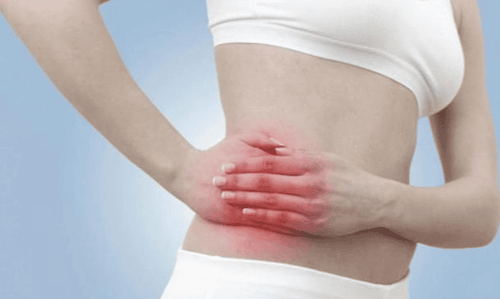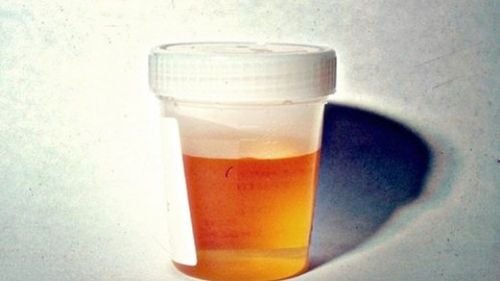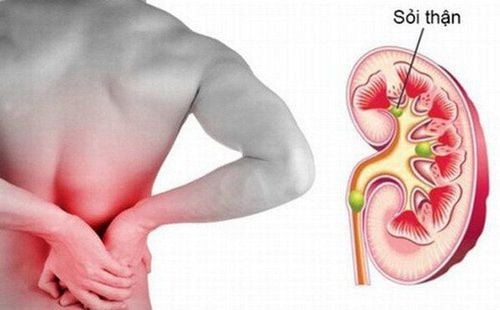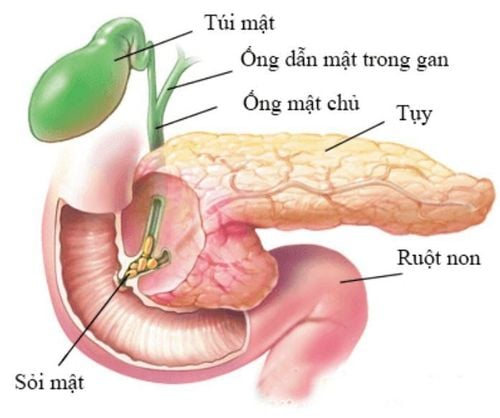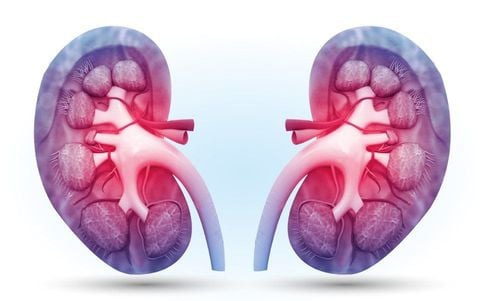This is an automatically translated article.
Posted by Master - Doctor Hoang Tho, Specialist in Urology, Vinmec Times City International HospitalLaparoscopic laser lithotripsy is a method that uses a small endoscopic tube, with a camera attached, inserted through the urethra into the bladder, up the ureter to access the stone, using laser energy directly to break up the pellets. stones in the lumen of the ureter. This is a less invasive treatment method than classic surgical methods, bringing high efficiency in treatment, patients with less pain, quick recovery, usually discharged after 1-2 days.
1. When is endoscopic laser lithotripsy required?
Patients with ureteral stones often present with symptoms of low back pain, painful urination, frequent urination or may go to the emergency room because of urinary pain. Do ultrasound test or CT scan of urinary system to detect ureteral stones, patients need surgery when:
ureteral stones in middle 1/3, lower 1/3 with size from 0.5 cm to 2.5 cm Urinary stones The ureter is smaller than 0.5cm after medical treatment after 1 week, but the patient still has pain, the stone is on the ureteral stricture or on the protrusion of the ureter. Pelvic stones or ureteral stones in the upper third have failed extracorporeal lithotripsy. Which patients cannot have laparoscopic laser lithotripsy?
Patient has uncontrolled coagulopathy. Urinary tract infection is in the acute stage that has not been treated. Patients with urethral stricture, patients with long ureteral stenosis below the stone site. Patients with osteoarthritis cannot lie in the obstetric position. Patients with kidney failure.
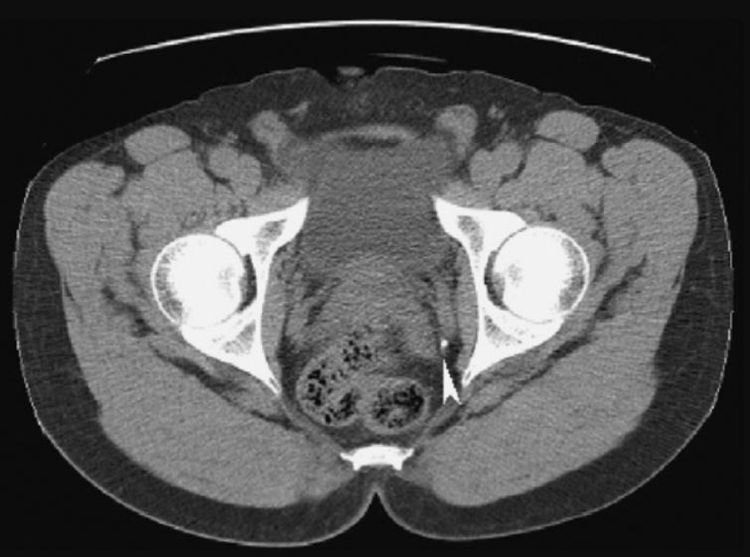
CT-scan vùng chậu cho thấy hình ảnh sỏi niệu quản đoạn niệu quản xa bên trái
2. Advantages of endoscopic laser lithotripsy
Patient has no incision, good psychological and aesthetic feeling. The laser source directs the stone and disperses the stone, so there is less damage to other organs. Very little pain, gentle postoperative, quick recovery thus avoiding complications due to long lying, patients quickly urinate in the natural way. Safer than other methods, less risk of bleeding, less complications.
3. What are the advantages of ureteroscopy compared with other stone treatment methods?
An advantage of flexible ureteroscopy is that it allows entering the ureters, calyces, and renal pelvis to directly access the stone using laser energy to break up the stone removed with just one surgery. .
Extracorporeal shock wave lithotripsy (SWL), kidney stones or ureters can be located under X-ray screen, ultrasound and use shock waves to break up the stone. However, after dispersing the stone fragments, when they move out naturally, they can block the ureter and cause urinary colic. On the other hand, there are ureteral stones and hard kidney stones that cannot be broken up by this method.
If endoscopic PCNL is selected, the patient needs to create a tunnel through the skin into the renal parenchyma into the pyelonephritis to access the stone and use laser energy to break up the stone and remove it. This method is more invasive, so it is indicated for kidney stones larger than 1.5 cm.
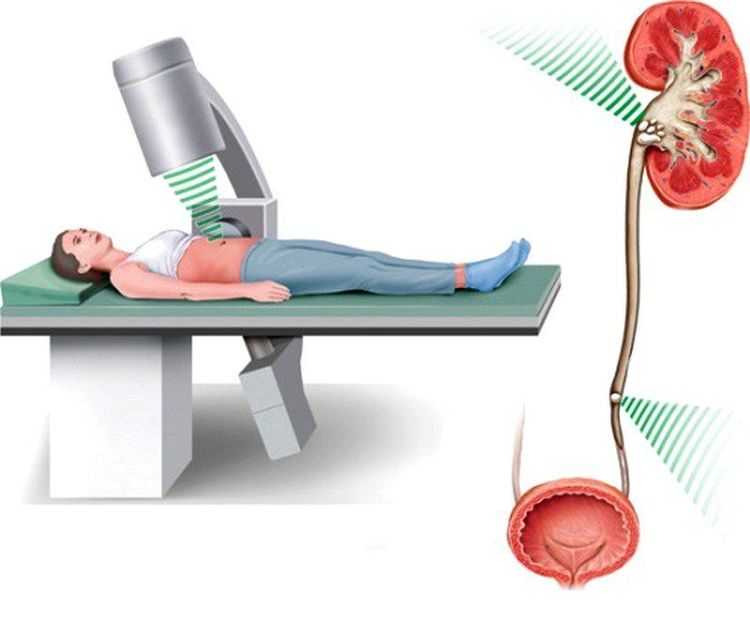
Hình ảnh mô phỏng phương pháp tán sỏi ngoài cơ thể (Shock wave lithotripsy)
4. What preparation is required before performing laparoscopic laser lithotripsy?
You need to fast and do basic surgery tests such as blood chemistry, hematology, ultrasound or CT scan of the urinary system, chest X-ray, electrocardiogram...
Total stool Urinalysis and urine culture will also be ordered before surgery to ensure that the patient does not have a urinary tract infection or, if present, needs to be treated before surgery.
If the doctor has indicated that you need surgery, you will be examined and consulted with an anesthesiologist and scheduled for surgery.
In case you are taking antiplatelet drugs, anticoagulants may have to be stopped for 1 week or can be continued at a low dose depending on the opinion of the cardiologist and anesthesiologist.
You must have the surgical procedure explained to you by the surgeon and sign the consent for surgery.
On the day of surgery, you need to fast for 6 hours before surgery and fast for 2 hours before surgery.
Prophylactic antibiotics are usually given as a single dose before surgery.
5. What are the steps to perform Laparoscopic laser lithotripsy?
This surgery is done under general anaesthesia or spinal anaesthesia.
After you sleep, or no longer feel pain, the surgeon will insert a small endoscope with a camera through the opening of the urethra into the bladder and up the ureter to access the stone. If the stone is small, it can be removed with a gravel basket. Large stones are broken up into small pieces with a laser, in most cases these fragments are removed from the ureter with a stone collection device.
After surgery to avoid narrowing of the ureter and to ensure a good drainage of urine from the kidney to the bladder, the surgeon usually places a ureteral stent (Double J), this ureteral stent is often scheduled by the doctor to the endoscopic hospital. The bladder is withdrawn 2 to 3 weeks after surgery.
There are cases where the ureter is narrow so the endoscope cannot reach the stone for dissolution, the surgeon will have to put a stent in the ureter for 1-2 weeks to widen the ureter, then perform endoscopic surgery. lithotripsy can continue.
In case the ureteral stone moves to the kidney during surgery (especially the ureteral stones in the upper third near the kidney), the surgeon can switch to the flexible endoscope to continue endoscopic lithotripsy or extracorporeal lithotripsy the next day.
After surgery, the patient is often placed a bladder catheter, the purpose of bladder catheterization is to monitor urine, monitor bleeding, and this catheter is usually removed the next day. However, there are cases when surgery is favorable with low risk of bleeding that may not require cystostomy.

Trước khi tiến hành phẫu thuật, người bệnh được gây tê tuỷ sống
6. Common post-surgery
After surgery, you will be taken to the recovery room to monitor, when you are stable, you will be transferred to the inpatient department after surgery.
After surgery, you will usually feel a burning sensation in the urethra, the nursing care can remove the catheter for you if the urine passes through the urinary catheter.
After the catheter is removed, you can urinate normally, at first there may be blood in the urine, then the urine will become clear. You may have mild lower back or bladder pain after surgery, which is usually well controlled with oral pain medication.
Nausea: You may have this symptom due to the effects of the anesthetic, but it is usually transient.
Diet: After surgery, when you are awake, you can eat light food, drink lots of water, after 24 hours you can eat normally.
Activities: Usually you leave the hospital 1 day after surgery, then you can do normal activities, but because there is still a ureteral stent, when you exercise vigorously, you may have pain and blood in the urine. In cases of pain and blood in the urine, you need to contact your doctor for specific instructions.
7. Risks and Complications of Laparoscopic Laser Ureterectomy
Most of the cases after surgery did not record any complications. However, with any surgical intervention, risks and complications are noted as follows.
Some complications are related to general health conditions and to anesthesia. These complications will be explained to the patient by the anesthesiologist and surgeon during the preoperative visit and which are possible complications for all surgical interventions.
Complications directly related to Laparoscopic laser ureteral lithotripsy are rare but can occur such as:
Low back pain due to ureteral stent (Double J): Patient after endoscopic surgery Ureteroscopy and stenting may cause low back pain, symptoms from dull pain, even pain when the patient is active. Ask your surgeon about the risks/benefits of ureteral stents after surgery.
There may be stones left in the kidney or ureter after surgery. The surgeon will advise you on how to deal with these small stones, usually extracorporeal lithotripsy or laparoscopic second soft bronchoscope lithotripsy with fragments of stones on the kidney. Injury to the ureter: Injury to the ureter can be encountered during ureteroscopy, damage that is tear, perforation of the ureteral wall. Almost 100% of these lesions will heal with prolonged ureteral stenting (for about 2 - 4 weeks), in very rare cases of severe ureteral injury that requires surgical resection of the ureter. Urethral stricture: Formed by post-operative scar tissue in the lumen of the ureter is a dangerous complication of ureteroscopy. Fortunately, with the advent of small ureteroscopes and advanced surgeon techniques, this risk is becoming rarer and rarer Hematuria and infection : Bleeding and infection may occur later. during ureteroscopy (5%), but most of these gradually stabilized with analgesics and urinary antibiotics.
Cases after surgery where the patient has a fever, painful urination, and a clear urinary tract infection, it is necessary to take blood, take urine culture to find out bacteria and actively treat with antibiotics according to the antibiotic chart. .
8. Diet for patients with urinary stones
Drink enough water: Every day must drink at least 2L of water, not drinking enough water will make the urine concentrated, which will help form stones.
Limit salt intake: Eating too much salt will cause calcium to be excreted a lot and form urine stones, so you need to eat light.
Eat enough protein: Eating too much protein will increase calcium, oxalic acid, uric acid will cause acidification of urine and easily lead to urinary stones.

Người bệnh có sỏi tiết niệu nên hạn chế ăn quá nhiều muối
Choose foods rich in fiber: Foods rich in fiber help limit calcium absorption and when fiber combines with calcium, it will help reduce calcium excretion through the kidneys by increasing calcium excretion in the stool. Therefore, instead of eating white rice, you should eat rice mixed with cereals, raw vegetables and should eat fresher fruits.
Endoscopic laser lithotripsy is currently being performed routinely at Vinmec International General Hospital. This technique is trusted thanks to the success rate of up to 95%, complications less than 5%.
This technique is performed by a team of doctors who are leading experts in urology at Vinmec, along with the most modern laparoscopic surgery machine and laser lithotripsy machine in the region, the instruments used in surgery. quality technology meets international standards.
To register for examination and treatment at Vinmec International General Hospital, you can contact the nationwide Vinmec Health System Hotline, or register online HERE.





